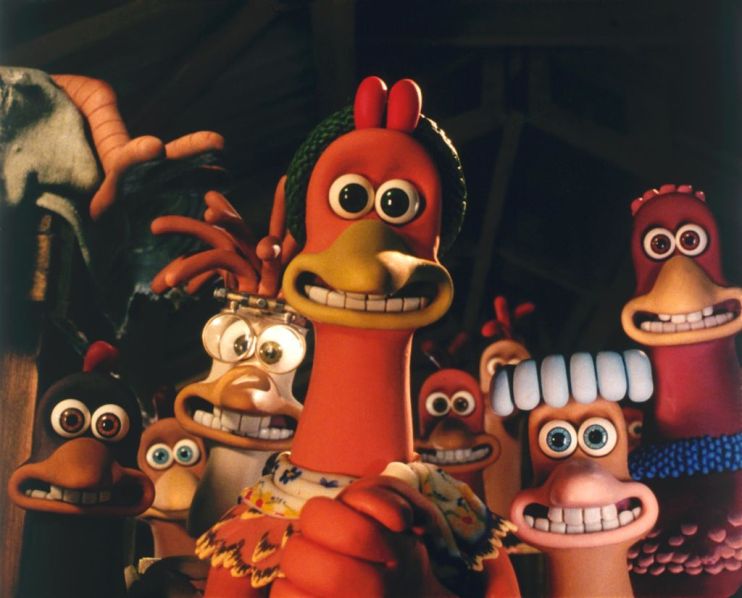AI won’t kill off the artist – just look at Chicken Run 2

The enduring success of claymation chickens shows AI will not rule the roost, writes Anna Moloney
Amid the throes of the intelligence revolution, much has been said about the death of the artist. Software programmes like Midjourney mean we can now create images and videos with just a few prompts, allowing anyone to become an artist with ease. At one point over the summer, 81 of the bestselling e-books on the Amazon top 100 young adult romance list were AI-generated. Dall-E provides instant original masterpieces of the art world. Panic has duly set in: the artist is on a steady path to redundancy.
But last week a slice of hope cut through: Chicken Run: Dawn of the Nugget, was released. And the nation rejoiced. The much-anticipated sequel is the latest offering from Aardman Animations, the studio known for similarly venerated Wallace and Gromit and Shaun the Sheep, and comes a staggering 23 years after the same brood of clay chickens first graced our screens to critical acclaim. Raking in $224.8m at the box office, Chicken Run remains the highest-grossing stop motion animated movie ever made.
But it’s not all stop motion farmyard animals, the enduring success of Chicken Run tells us something critical: we still care deeply about art. For, aside from a gift for compelling storytelling and lovable characters, there is something else that makes Aardman films so special: craft and labour.
Made using stop-motion animation with clay puppets, Aardman does not choose the easy route when it comes to their filmmaking. The opening shot of Chicken Run: Dawn of the Nugget, 30 seconds in length, took the studios 18 weeks to shoot alone, and that was on top of five weeks of prep time and two-man years for the set to be built.
Meanwhile, the number of obstacles faced by the studio in the last 23 years has been of Biblical proportions. A fire at the claymation specialists’ Bristol warehouse in 2005 saw hours of the studio’s labour reduced to rubble, with sets and puppets destroyed. After that, came the flood: three days of rainfall and a buckled roof just after all the puppets were painstakingly recreated. Then, the plague: the Covid-19 pandemic delayed production again. Even clay chickens were not immune to quarantine. “Weather, wind, pestilence, plagues – we survived it all. Next one’s coming out in 2050,” Chicken Run director Sam Fell told The New York Times.
The film, picked up by Netflix and released on Friday, already looks to have been a success, having earned the highest-ever audience score for any Aardman feature on Rotten Tomatoes along with a warm critical reception. Nonetheless, such a tale of strife, in an age of convenience-optimised technology undoubtedly begs the question: why bother?
After all, fire, flood, drought or plague would be no match for the modern tool of a software backup and new technology means there was really no need to go to all of this trouble. Yet there is something in the tangibility of the labour itself which is key to Aardman’s success. We’re regularly served up Netflix shows and movies which take a fraction of the time to produce, but it is the tale of the construction and the viewers’ consciousness of the hours of labour that went into the production that elevates our appreciation of these films.
Behind the scenes spin-offs of Aardman series have proven extremely popular, with ‘the making of’ books, films and articles increasingly part and parcel of an Aardman release. True to fashion, a documentary of the creation of Chicken Run: Dawn of the Nugget was released alongside the film on Netflix, showcasing the graft and craftsmanship that goes into producing a full-length feature claymation film. In many ways, we are just as interested in the story of the making of these films as the films themselves. It is hard to conceive of a behind-the-scenes film of an AI-generated Chicken Run 3.
That being said, the studio does already incorporate CG effects into its films and has recently begun playing around with AI. But, crucially, even with the use of CG, animators ensure the movements of the chickens are limited to what their clay counterparts can do. Initial CG attempts were scaled back, with concerns the results were “too smooth”. “We needed to get the chunk kind of feel back into it,” animation supervisor Ian Whitlock said. Sometimes, you can even see the fingerprints on the clay.
And, indeed, it is the fingerprints that are key. AI has ushered in a world where the possibilities of creativity are endless, but art thrives on limitations. When we marvel at art, we so often, whether we know it or not, also marvel at the process of it being created; the story behind the story. And that, AI can’t replace.